Fascination for Materials
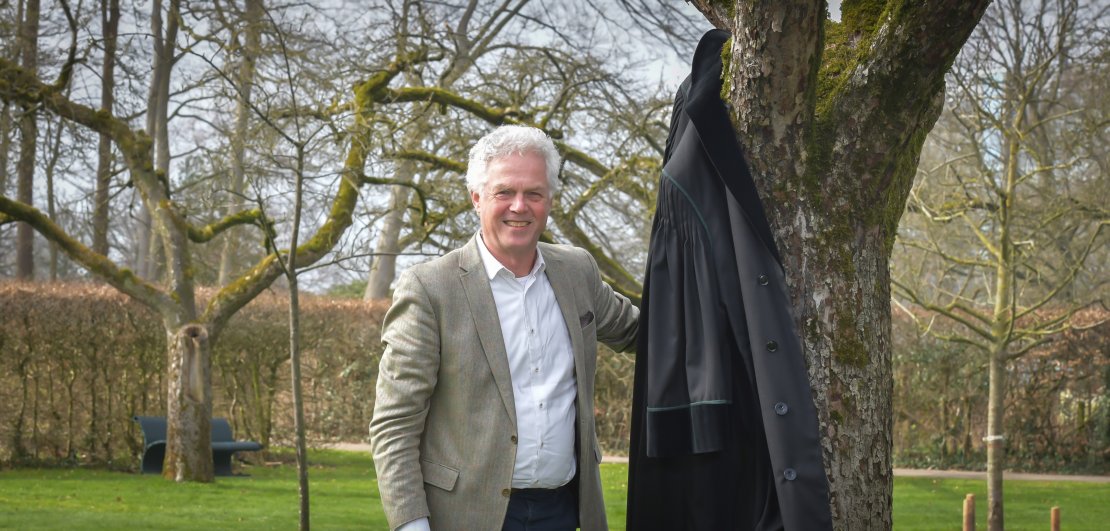
On Friday, October 11th, 2024, Thom Palstra will retire from his position as professor at the University of Twente. His fascination for materials science started at the University of Leiden and continued at Shell Research, Bell Laboratories and the University of Groningen to his current position.
The title of his Valedictory Lecture will be: "Fascination for Materials"
In the morning (10-14h) there will be a symposium of lifetime colleagues.
The symposium is entitled “Progress and Current Challenges in Electronic Materials”. It takes place in Waaier 2.
Speakers include:
10:05 – 10:20 Oana Jurchescu: "Transforming the Ordinary: Printed Electronics for Better Lives and a Healthier Planet"
10:20 – 10:35 Paul van Loosdrecht: "The quest for a spin-liquid state in the Kitaev material α-RuCl3"
10:35 – 10:50 Maria Loi: "Materials, what else?"
10:50 – 11:05 Bas van Aken: "A materials scientist journey: from small crystals to large polders"
11:05 – 11:20 Beatriz Noheda: "Smarter than smart: materials for future electronics"
11:20 – 11:35 Aisha Aqueel: "Magnetic twists in chiral magnets"
11:35 - 11:50 Machteld Kamminga: "Investigating the effect of reductive annealing on spin fluctuations in superconducting electron-doped Nd1.85Ce0.15CuO4-δ
11:50 - 12:05 Guowei Li: "Topological catalysis: From charge to spin"
13:00 – 13:20 Bertram Batlogg: "Surprises in Condensed Matter Physics"
13:20 – 13:40 Yoshihiro Iwasa: "Low carrier density superconductors"
13:40 – 14:00 Hidenori Takagi: "Heavy fermion oxide LiV2O4 with new surprise in store"
14:00 Coffee and tea will be served in the Foyer of the Waaier
15:00 – 16:00 Thom Palstra
16:00 - 18:00 Reception restaurant of the Waaier.
Abstracts see below.
- Prof. B. Batlogg (ETH Zurich)
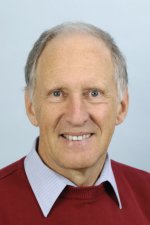
Bertram Batlogg is a Condensed Matter Physicist, who got his education and PhD at ETH Zurich, before joining Bell Laboratories in Murray Hill, NJ, as researcher and later also as department head / director in the Physical Sciences Research area. From 1990 until it was dissolved in 1996, he was also a director of the Consortium for Superconducting Electronics, a research and development partnership involving several industrial and academic institutions in the USA. In 2000 he moved to ETH Zurich as full Professor for Physics of Condensed Matter, where he transitioned into emeritus status in 2016.
His principal scientific interest is in solid state physics, with the goal of creating and understanding materials with novel physical phenomena, and exploring them for applications that derive their usefulness from their electrical, magnetic or optical properties. The research topics cover a wide spectrum and include mainly strong electron correlation and novel electronic states: high temperature superconductivity, giant magnetoresistance, manganites and cobaltates, quantum magnets, numerous novel superconductors, heavy fermions, mixed-valence compounds. In addition to these quantum materials (in current terminology) he has focused also on organic molecular crystals and organic semiconductors.
Batlogg’s scientific work has been recognized with prizes and fellowships, and in the 1981-1996 ISI Citation survey he was among the four most frequently cited physicists. More recently he serves at fellowship programs at ETH, on a university board of directors, and a social program. - Prof. Y. Iwasa (U Tokyo)
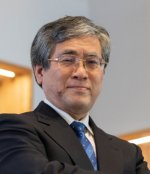
Yoshihiro Iwasa earned his Ph.D. in 1986 from The University of Tokyo, where he later held positions as a research associate and then a lecturer. In 1993-1994, he had the opportunity to collaborate as a visiting scientist at AT&T Bell Laboratories in Murray Hill, USA, with Thom Palstra. In 1994, Iwasa transitioned to associate professor at the Japan Advanced Institute of Science and Technology (JAIST), before ascending to the position of full professor at the Institute for Materials Research, Tohoku University in 2001. In 2010, he made the move to the Department of Applied Physics at The University of Tokyo, concurrently taking on the role of team leader at the RIKEN Center for Emergent Matter Science.His research expertise lies in the realm of nanomaterial physics, with a specific focus on 2D materials. Iwasa's work centers on manipulating the quantum phase of nanomaterials through innovative device designs. Throughout his illustrious career, he has garnered several awards, including the Japan IBM Science Prize, The Commendation for Science and Technology by the Minister of MEXT, the Honda Frontier Prize, and the Nishina Memorial Prize. - Prof. H. Takagi (Max Planck Inst. Stuttgart)
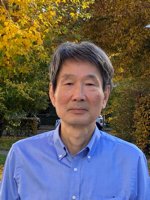
Hidenori Takagi has been a Director of Max Planck Institute for Solid State Research, Germany, since 2013, and a Professor at department of physics, the University of Tokyo, Japan, since 2011. He received his PhD from the University of Tokyo in 1989. After joining AT&T Bell Laboratories, USA, as a Post-Doctoral member of technical staff in 1990, he returned to the University of Tokyo, becoming an Associate Professor in 1994 and a Professor in 1999. From 2002 to 2013, he was jointly appointed at RIKEN, Japan as a Chief Scientist. He has worked on experimental condensed matter physics, in particular metal-insulator transition, superconductivity, and quantum magnetism in correlated transition metal oxides. - Dr. A. Aqeel (U Augsburg)
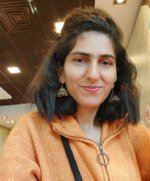
Aisha Aqeel is currently heading the research group "Spintronics with Helimagnetic Insulators" at the University of Augsburg, Germany, as part of the Emmy Noether grant funded by the German Research Foundation (DFG).A scientist with a robust background in applied physics and materials chemistry, Aisha possesses a diverse skill set in experimental techniques. Her expertise includes X-ray diffraction, nanodevice fabrication, crystal growth, and magnetic property measurements. These skills have allowed her to navigate the interdisciplinary landscape between physics and materials chemistry with finesse. Aisha's vision extends beyond traditional boundaries, as she plans to establish her own research group. Her ambition is to bridge the gap between physics and materials chemistry, adding a unique and crucial chemistry twist to the field of spintronics and quantum technology. In a landscape predominantly focused on the physical characterization of well-known materials, Aisha aims to broaden the horizons by infusing a strong chemistry perspective into the realm of quantum science and technology. - Prof. P. van Loosdrecht (U Koln)
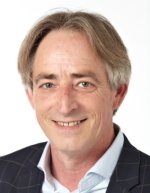
Paul van Loosdrecht studied physics at the Einhoven university of technology. He obtained his PhD from the university of Nijmegen in 1992 for work on fundamental excitations in incommensurate crystals and fullerenes. He was awarded a NWO ‘Talent’ award to work on endohedral fullerence at IBM-Almaden research center in the USA. After post-doc positions at the high magnetic field laboratory in Grenoble and the university of Aachen he moved to the University of Groningen on a NWO ‘Springplank’ award where he became a full professor in optical condensed matter physics in 2003. In 2013 he moved to the university of Cologne. His main interests are the fundamental properties of complex matter and optical manipulation of molecular and complex matter using advanced linear and non-linear spectroscopies. Central to his current research are non-equilibrium material physics and the role of spin-orbit coupling, correlations, and topology in the physical properties of novel quantum materials. He published over 200 peer reviewed articles, has been Dean of the Faculty of Mathematics and Natural Sciences (2020-2023), and is editor for Physics Reports. - Prof. M. Loi (RU Groningen)
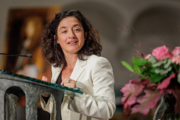
Maria Antonietta Loi studied physics at the University of Cagliari in Italy where she received the PhD in 2001. In the same year she joined the Linz Institute for Organic Solar cells, of the University of Linz, Austria as a postdoctoral fellow. Later she worked as researcher at the Institute for Nanostructured Materials of the Italian National Research Council in Bologna, Italy. In 2006 she became assistant professor and Rosalind Franklin Fellow at the Zernike Institute for Advanced Materials of the University of Groningen, The Netherlands. She is now full professor in the same institution and chair of the Photophysics and OptoElectronics group. She has published more than 300 peer-reviewed articles on photophysics and optoelectronics of different types of materials. In 2013 she has received an ERC Starting Grant and in 2022 and ERC Advanced Grant from the European Research Council. She currently serves as Editor-in-Chief of Applied Physics Letters and she is member of the international advisory board of several international journals in physics and materials physics. In 2018 she received the Physicaprijs from the Dutch physics association for her outstanding work on organic-inorganic hybrid materials. In 2020 she became fellow of the American Physical Society. In 2022 she was elected fellow of the Dutch Academy of Science (KNAW). In the same year she became fellow of the European Academy of Science (EURASC) and of the Royal Society of Chemistry. - Dr. M. Kamminga (U Utrecht)
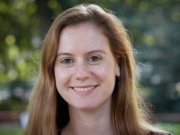
Machteld Kamminga obtained her PhD in materials chemistry from the University of Groningen in 2018 (cum laude), under supervision of Prof. Thom Palstra. After her PhD, she moved to the University of Oxford with a Rubicon research grant from the Dutch Research Council (NWO), to study intercalation mechanisms in layered chalcogenides with Prof. Simon Clarke. After receiving a Marie Sklodowska-Curie Actions Individual Fellowship in 2020, Machteld moved to the University of Copenhagen to work with Prof. Kim Lefmann on high-temperature superconductors using neutron scattering. In February 2023, Machteld joined Utrecht University as an assistant professor, as part of the QuMat (Materials for the Quantum Age) research program (see qumat.org). - Dr. B. van Aken (TNO Energy Transition)
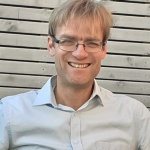
Dr. Bas Van Aken received his Ph.D. in solid state chemistry from the University of Groningen, after which he worked as a postdoc at Cambridge University and at the Max Born Institute for Nonlinear and Ultrafast Optics in Berlin. He is currently a researcher at TNO Energy Transition, in the Solar Energy group, where he focusses on the outdoor performance of bifacial and back-contact modules and the integration of solar parks in the (agricultural) landscape, linking module and system design to the ground irradiance, soil quality and photosynthesis. Bas chaired the international bifiPV workshop in 2019 and coordinates the Symbizon project that combines strip cultivation with solar trackers. - Prof. G. Li (Ningbo Institute of Materials Technology & Engineering)
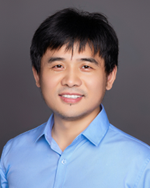
Guowei Li obtained his Ph.D. from the University of Groningen in 2016 under the supervision of Prof. Thomas Palstra. Following this, he worked as a post-doctoral fellow and group leader at the Max Planck Institute for Chemical Physics of Solids in the group led by Prof. Claudia Felser. In June 2021, he joined the Ningbo Institute of Materials Technology & Engineering, Chinese Academy of Sciences, where he serves as an associate professor and heads the Magnetic Materials for Energy Conversion group. He also holds a leadership role in a Max Planck Partner Group. His expertise and research interests primarily lie in the growth of topological and magnetic single crystals, spin chemistry, and topological catalysis for clean energy applications. - Prof. B. Noheda (RU Groningen)
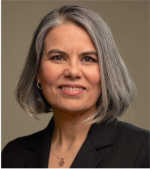
Beatriz Noheda is full Professor at the Zernike Institute for Advanced Materials, University of Groningen (The Netherlands), where she chairs the Solid State Materials for Electronics group. Noheda arrived in Groningen in 2004 after being awarded a Rosalind Franklin Fellowship. Before that, she had been Assistant Physicist (tenure-track) at the Physics Department in Brookhaven National Laboratory (New York), and as beamline scientist at the NSLS synchrotron. Noheda had also held various research stays and positions at University of Saarlandes, Clarendon Laboratory in Oxford and Vrije Universiteit in Amsterdam, after receiving her PhD in Physics from the UAM in Madrid in 1996. Noheda is the founding director of the Groningen Cognitive Systems and Materials center (CogniGron). She is a Fellow of the American Physical Society and recipient of the IEEE- Robert E. Newnham Ferroelectrics Award. Noheda is author of more than 150 publications, receives more than 10 personal invitations per year to speak in international conferences and has given more than 10 plenary and keynote talks. She has been elected member of the Netherlands Academy of Technology and Innovation (AcTI) and has served as member of numerous national and international committees, as well as of several editorial boards. - Prof. O. Jurchescu (Wake Forest U)
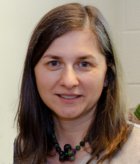
Oana D. Jurchescu is a Baker Professor of Physics at Wake Forest University (USA) and a fellow of the Royal Society of Chemistry. She received her PhD in 2006 from University of Groningen, the Netherlands, and was a postdoctoral researcher at the National Institute of Standards and Technology, USA. Her expertise is in charge transport in organic and organic/inorganic hybrid semiconductors, device physics and semiconductor processing. She has received numerous awards for her research and teaching excellence, including the NSF CAREER Award, the NSF Special Creativity Award, and the Pegram Award from the American Physical Society. Dr. Jurchescu serves as an associate editor for Journal of Materials Chemistry C (RSC) and Science Advances (AAAS) and is a member of the Advisory Board of Chemical Physics Reviews, Organic Electronics, and J. Phys Materials.
Abstract Oana D. Jurchescu
Transforming the Ordinary: Printed Electronics for Better Lives and a Healthier Planet
Our daily lives are becoming increasingly reliant on electronics, from the smartphones in our pockets to the intricate power grids that energize our cities. The Internet of Things (IoT) envisions a world even more interconnected, demanding innovative technologies that are flexible, adaptable, and affordable. Printed electronic devices hold immense promise in fulfilling this vision, yet their performance needs further refinement to seamlessly integrate into real-world applications. In this presentation, I will discuss the progress in printed electronics, emphasizing the current challenges in optimizing charge injection and transport. We will also examine their environmental and operational stability, highlighting the key factors contributing to degradation. Finally, we will demonstrate the transformative potential of printed electronics in healthcare by showcasing flexible, skin-conformal radiation dosimeters. These printed devices, comprised of large arrays of organic thin-film transistors, provide real-time dose mapping directly on the patient's skin, surpassing the limitations of current methods.
Abstract Paul van Loosdrecht
The quest for a spin-liquid state in the Kitaev material α-RuCl3
One way to characterize quantum spin-liquids is through the fractionalization of spin excitations. A prime example of this is found in the exactly solvable Kitaev model of spin-1/2 moments with anisotropic exchange interactions on a tri-coordinated lattice. To find examples of this kind of physics in nature turns out to be challenging. The currently best-known examples of materials in which Kitaev-like physics plays a central role are the layered spin-orbit entangled J=1/2 systems Na2IrO3, α-Li2IrO3, and α-RuCl3. However, these materials all possess additional interactions, which, among other, lead to a magnetically ordered state at low temperature preventing the formation of a pure Kitaev spin-liquid (KSL) state. Apart from the ongoing quest for materials showing a true KSL ground state, one can also destabilize the magnetic order in the existing materials, which potentially can induce the sought-after KSL state. In this talk I will discuss two methods to destabilize magnetic order in α-RuCl3. The first one is through the application of an in-plane magnetic field leading to various field induced states. Though it has been shown by various authors that this indeed leads to suppression of the ordered state in α-RuCl3, the nature of the field-induced states is not fully clear. The second approach is a pump-probe method which creates holon and doublon excitations. These excitations are found to couple efficiently to magnetic excitations which in turn disorder the magnetically ordered state. For sufficiently high excitation densities the magnetic order is fully suppressed, leading to a quantum disordered magnetic state.
Abstract Maria Loi
Materials, what else?
In my talk I will discuss how Metal Halide Perovskite came to the photovoltaic research scene and how Thom was involved in pioneering this research topic in the Netherlands.
Abstract Bas van Aken
A materials scientist journey: from small crystals to large polders
Just like a crystal, a materials scientists career has many facets. I’ll present the materials and properties that I encountered during my M.Sc. and Ph.D. studies and post-doc positions, ranging from metallic glasses to single crystals of perovskites and by serendipity non-perovskites, looking at deformation rates, magnetic and crystallographic ordering and learning along the way the concept of ferrotoroidicity. In 2006, I switched to applied research of photovoltaics (PV). Materials play an important role in PV, starting from the photovoltaic effect itself. The integration of the silicon wafers into solar panels is an intrinsic interplay of optical, electrical and thermal properties of several materials. They affect the initial performance of the product but also the longevity or failure under outdoor conditions. The choice of materials can even influence the photosynthesis on the soil, allowing ecological solar parks and even full integration with agriculture. And it all started with one very tired M.Sc. student attending the opening lecture of the FOM-days in 1996.
Abstract Machteld Kamminga
Investigating the effect of reductive annealing on spin fluctuations in superconducting electron-doped Nd1.85Ce0.15CuO4-δ
K.M.L. Krighaar, E.M.S. Schriver, C.P. Lauritzen, C.H. Qvistgaard, J.J. Cederholm, A. Alshemi, D. Song, A. Stampfl, J.-C. Grivel, K. Lefmann and M.E. Kamminga
In this work we present triple-axis neutron scattering studies on the low-energy magnetic fluctuations in the optimally electron-doped cuprate Nd1.85Ce0.15CuO4-δ (NCCO). In contrast to the hole-doped cuprates, as-grown NCCO is not superconducting and a post-synthesis reductive annealing is necessary to introduce superconductivity in the system. After this post-treatment, the superconductivity is found to gradually open a spin pseudogap at the antiferromagnetic ordering wave vector Q = (1/2, 1/2, 0) and forms a resonance centred at the same Q, but at energies above the spin pseudogap, that develops like a superconducting ordering parameter [1]. However, the role of the reductive annealing remains unclear in this system. By directly comparing an as-grown and annealed sample from the same crystal growth, we show that a significantly larger spin pseudogap is present in the non-superconducting sample, indicating that annealing in fact reduces the spin pseudogap. These results shed light on the effect of reductive annealing necessary to achieve superconductivity in electron-doped cuprates.
References:
[1] Zhao et al., PRL 99, 017001 (2007).
Abstract Guowei Li
Topological catalysis: From charge to spin
Exotic electronic states, manifesting across various topological phases, have been realized in recent years. These states significantly influence the surface electronic structures of the materials under investigation and offer an excellent platform for gaining insights into the catalytic mechanisms of surface reactions. Our works suggest that these surface states can function as either electron acceptors or donors during molecular adsorption, thereby modulating the adsorption energy and Gibbs free energy in electrochemical catalytic reactions [1]. Additionally, in our investigation of the spin polarization at the transition metal sites within these topological materials, we identified the crucial role played by spin-polarized electrons in optimizing catalytic efficiency [2, 3]. This finding underlines the significance of spin dynamics in understanding and enhancing the performance of catalytic reactions including green hydrogen production and asymmetric processes [4].
References:
[1] G. Li, Q. Xu, C. Felser et al. Sci. Adv., 5: eaaw9867 (2019).
[2] H. Luo, P. Yu, G. Li, K Yan. Nat. Rev. Phys., 611-624 (2022)
[3] G. Li, P. Merz, C. Shekhar, C. Felser, et al. Angew. Chem. In. Ed. 62, e202303296 (2023)
[4] S Sun, Y Zhang, W Li, G Li et al. Advanced Materials, 2312524 (2024)
Abstract Bertram Battlogg
Surprises in Condensed Matter Physics
A fasciation of working in the field of condensed matter physics in based largely on the discovery of unexpected and novel physical phenomena as the result of insightfully creating, exploring and modifying materials. This approach characterizes Thom Palstra’s outstanding scientific work and we will recall some of the early examples, such as superconductivity with heavy electrons, at high temperatures in cuprates or in Fullerenes.
Abstract Beatriz Noheda
Smarter than smart: materials for future electronics
In the past decades we have witnessed a huge development of smart materials: materials that can sense changes in the environment and react to them. Nowadays, we look for the next challenge: materials that, first, sense, then compute and, finally, act accordingly. Computing requires data processing and data storage; all performed by the same material. In addition, being aware of the unsustainably large energy demands of current data-driven computing, for this dream material energy efficiency is a must. I will discuss how we work towards that end, inspired by the impressive performance of the mammalian brain, in an unprecedented multidisciplinary effort. I will illustrate it with examples of my own work on ferroelectrics and complex oxides, materials that our host of honour knows very well.
Abstract Yoshi Iwasa
Low carrier density superconductors
In my presentation, I will present two topics on low carrier density superconductors involving Thom Palstra and myself. After the discovery of high Tc cuprate superconductors, the low carrier density superconductivity used to be a guideline toward higher Tc. Thus I have been working on molecule-based superconductors and gate-controlled superconductivity in field-effect transistor (FET) devices.
After superconductivity was discovered in potassium intercalated C60 in the chemical composition of K3C60 by the Bell Laboratories group including Thom, the empirical rule has been established, saying that Tc increases with increase of the ionic radius of alkali ions, in other words with the lattice parameters. But this relation collapses at RbCs2C60, meaning that superconductivity disappears in Cs3C60. Palstra’s group including myself came up with an idea that the disappearance of superconductivity in Cs3C60 is due to the over-expansion of lattice parameter, causing an insulating state. Based on this thought, we applied pressure to Cs3C60, and discovered superconductivity that appeared at 40 K [1]. This was confirmed by the British group thirteen years later [2], now it is established that Cs3C60 is a superconductor with the highest Tc among molecule-based superconductors.
Another cross section with Thom was the first international workshop on the organic single crystal transistors in 2003 at Lorentz Center, University of Leiden, organized by Thom Palstra and his colleagues. This workshop followed the first realization of organic single crystal FETs made by several groups, and very much encouraged all the participants including myself. The continuous activity of the new community lead my group to the discovery of electric-field-induced superconductivity by introducing electrochemical concepts [4,5]. Nowadays the FET device is a versatile tool for the electric field tuning of superconductivity and topological states of matter, as exemplified by twisted bilayer graphene [6].
References:
[1] T. T. M. Palstra et al., Solid State Commun. 93, 327 (1995).
[2] A. Y. Ganin et al., Nat. Mater. 7, 367 (2008).
[3] O. D. Jurchescu et al., Appl. Phys. Lett. 84, 3061 (2004).
[4] K. Ueno et al., Nat. Mater. 7, 855 (2008).
[5] J. T. Ye et al., Science 332, 1065 (2012).
[6] Y. Cao, et al., Nature 556, 43 (2018)
Abstract Aisha Aqeel
Magnetic twists in chiral magnets
Nature forms many patterns, and it's fascinating to observe how individual components interact to create such complexity. In magnets, beautiful patterns can emerge even without inversion symmetry. The twisting magnetic patterns in chiral helimagnetic materials, whether topologically trivial or not, can provide collective magnetic excitations across a wide frequency range from a few GHz to several THz. These unique properties make helimagnets promising candidates for applications in spintronics and unconventional computing. Realizing these concepts, however, requires ultraclean magnetic systems with minimal losses and a deep understanding of their magnetization dynamics. In this talk, I will explore the fundamental aspects of chiral helimagnets and discuss their potential relevance for future technologies.
Abstract Hidenori Takagi
Heavy fermion oxide LiV2O4 with new surprise in store
The mixed-valent spinel LiV2O4 is known as the first oxide heavy-fermion system. There is a consensus that a subtle interplay of charge, spin, and orbital degrees of freedom of correlated electrons plays a crucial role in the enhancement of quasi-particle mass, but the specific mechanism has remained yet elusive. A charge-ordering (CO) instability of V3+ and V4+ ions that is geometrically frustrated by the V pyrochlore sublattice from forming a long-range CO down to T =0 K has been proposed as a prime candidate for the mechanism. In this talk, we uncover the hidden CO instability by applying epitaxial strain on single-crystalline LiV2O4 thin films. We find a crystallization of heavy fermions in a LiV2O4 film on MgO, where a charge-ordered insulator comprising of a stack of V3+ and V4+ layers along [001], the historical Verwey-type ordering, is stabilized by the in-plane tensile and out-of-plane compressive strains from the substrate. Our discovery of the [001] Verwey type CO, together with previous realizations of a distinct [111] CO, evidence the proximity of the heavy-fermion state to degenerate CO states mirroring the geometrical frustration of the V pyrochlore lattice. Our recent transport (Hall coefficient RH and thermopower S) studies on LiV2O4 single crystals at low temperatures below 2K points to a semimetallic ground state with almost equally heavy electrons and holes, which gives us a hint for the origin of CO instability in k-space. The volume of semimetallic Fermi surfaces appears to respect roughly the LDA semimetallic Fermi surface produced by the crossing of narrow a1g bands and eg bands, though the mass is two orders of magnitude enhanced. These support the CO instability scenario for the mechanism behind the heavy fermion formation. We argue that LiV2O4 may bridge the oxide physics with heavy fermion physics.
References:
U. Niemann, Y.-M. Wu, R. Oka, D. Hirai, Y. Wanga, Y. E. Suyolcua, M. Kim, P. A. van Aken, and H. Takagi, Proceedings of the National Academy of Sciences 120, e2215722120 (2023).
For more information, contact s.a.m.terhedde-sloot@utwente.nl
